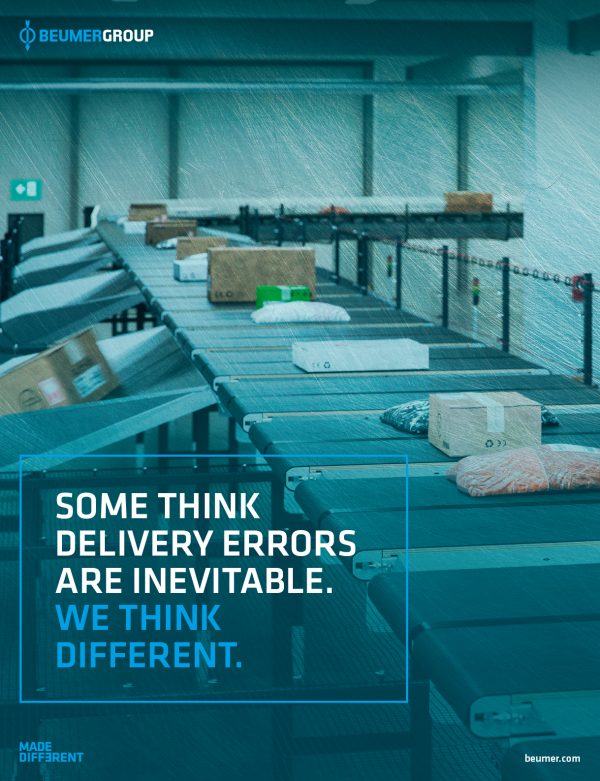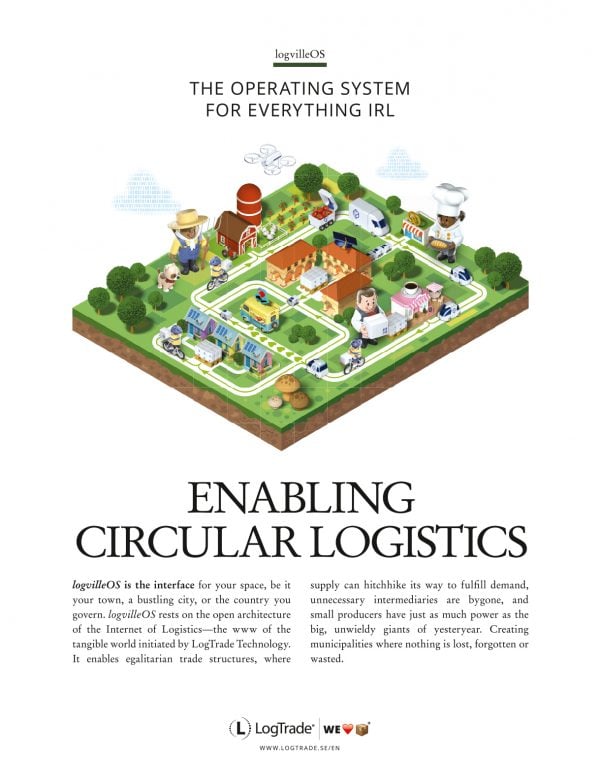The entire world may be going digital, but for postal services, there’s an unimpeachable reality: somewhere, every day, there exists a parcel that must be taken from one place and delivered to another.
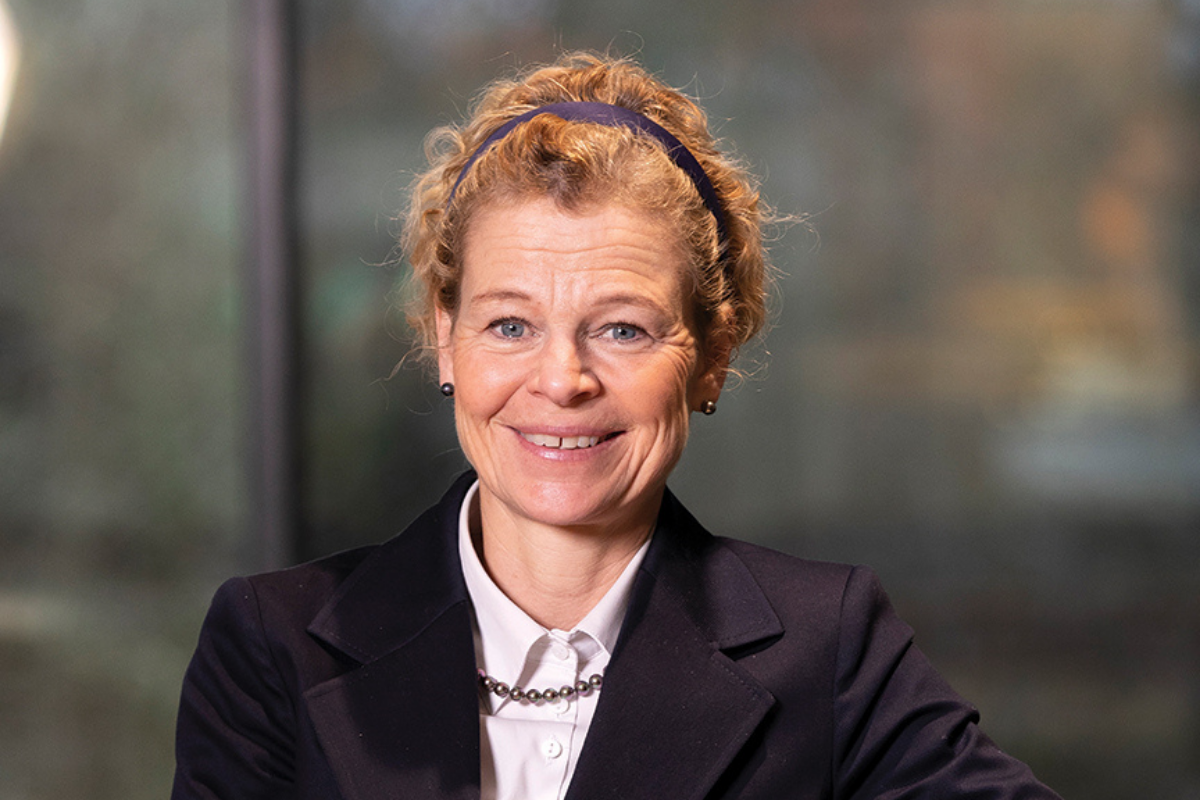
And while digitalisation improves just about every other aspect surrounding that situation, from ordering to payment and tracking to feedback, post offices have to handle the hard part of improving old-fashioned logistics. But how do you fix what hasn’t exactly been broken for many years?
“When you do your shopping online, the delivery of those goods is such an important part of the experience,” says Annemarie Gardshol, Group CEO of Nordic postal network PostNord AB. “So we really have to see things through the eyes of the consumer and make sure they receive their parcel in a way that’s most convenient for them.”
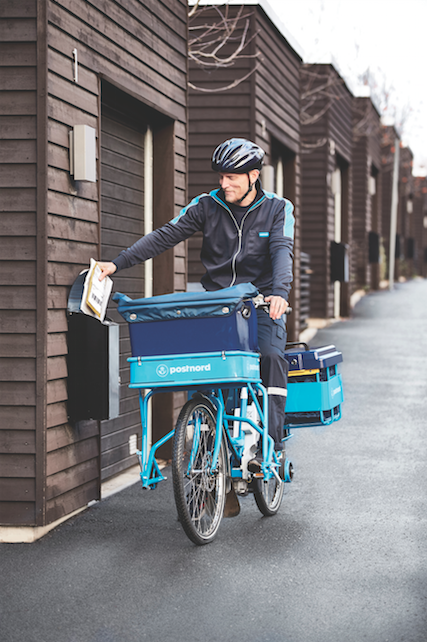
It’s a job that sounds easier than it is, particularly for PostNord, which came into existence in 2009 as an amalgamation of Denmark’s and Sweden’s postal services. The resulting entity PostNord AB is present in all four Nordic countries with 40% owned by the Danish State and 60% owned by the Swedish State.
“One of our key strengths is that we have a Nordic infrastructure,” Annemarie says. “We touch every single sender and receiver in the Nordics, and to have the infrastructure in place for that is quite an investment.”
The main challenge has been the seismic shift the postal industry is currently in the midst of: away from traditional mail and into the waiting arms of ecommerce. While ‘snail mail’ is on an inexorable decline, PostNord still delivered a not-insignificant 2.9 billion letters in 2019.
“Our physical mail volumes are declining and they have been doing so for the past 20 years,” Annemarie reveals. “On the other hand, our parcel volumes are just growing. And over the course of the past nine months, the impact of the pandemic has accelerated these patterns.”
The threat of COVID-19 has led to lockdowns and closures around the world, and retailers are among the hardest hit. Consumers stuck inside have flocked to online sellers like never before, kicking off a deluge of boxes, cartons and packages within postal systems.
Treading new ground means it’s crucial to have a clear endgame.
Despite supply chain delays also brought on by the pandemic, the online shopping machine is as well-oiled as ever, largely thanks to the efforts of postal services like PostNord AB. “However, providing an infrastructure covering the Nordics comes with a cost,” Annemarie admits.
“The infrastructure required by a fully functioning ecommerce system is very advanced. One has to have the courage to invest in such infrastructure and thus embrace growth.” PostNord AB’s commitment to that growth has, according to Annemarie, made the company the largest player in the Nordic countries in terms of parcel delivery capabilities.
“If you want something delivered to your home or close to your home in a parcel box, if you want to go to a pickup point or if you want to pick it up instore, we aim to provide the suitable offerings. Our coverage makes us unique and we have the scale and the infrastructure to allow people in the Nordics to live a modern life,” she says.
It’s a responsibility that is only exacerbated by the sheer size of the Nordics. Life in the countryside is far removed from the big cities and their shopping malls, but ecommerce has done its part to reduce that distance.
We touch every single sender and receiver in the Nordics, and to have the infracture in place for that is quite an investment.
“It’s become almost a human right to have access to the wide offering of products found on Amazon or Alibaba or Zalando, wherever you want to buy from, regardless of where in the world you live,” Annemarie explains.
“I think for any person living way out beyond the big cities, it’s important for them to still be able to have that access, and we are proud to contribute to providing it.” It’s a responsibility PostNord AB has never shied away from, particularly since Annemarie was appointed President and Group CEO in late 2019.
“When I came on board, we formed a very clear view on where the future for the company sat, what we needed to do to get there and what we’re expected to deliver both financially and non-financially,” she shares.
“We have all signed up to that plan and we’ve given the organisation a lot of empowerment to deliver.” Moving from the old ways to the new, she says, is one that requires a certain kind of leadership.
“When you’re in the middle of this type of transformation, you have to be a very curious person. You have to go out there and ask a lot of questions and listen. ‘The front line’, our employees delivering letters and parcels, know what works and what doesn’t in reality. Of course, it’s also hugely important to listen to the customers.”
Treading new ground means it’s crucial to have a clear endgame. “Going through a large transformation requires a defined agenda with definite targets, which supports the shift you want to make strategically, financially, with your brand, with your culture, with your capabilities, and so on, and you need to make sure you have the right organisation and people in place to drive it,” Annemarie adds.
“We also need to make sure we’re at the forefront of sustainability, and to support all that we need to make sure there are initiatives across the Group that will ensure we actually meet those goals.”
Fortunately, Annemarie was able to hit the ground running, thanks to her extensive experience within the company. During her time with PostNord AB, which began in 2012, she’s held several senior positions within the company, including CEO of PostNord Sweden since 2018.
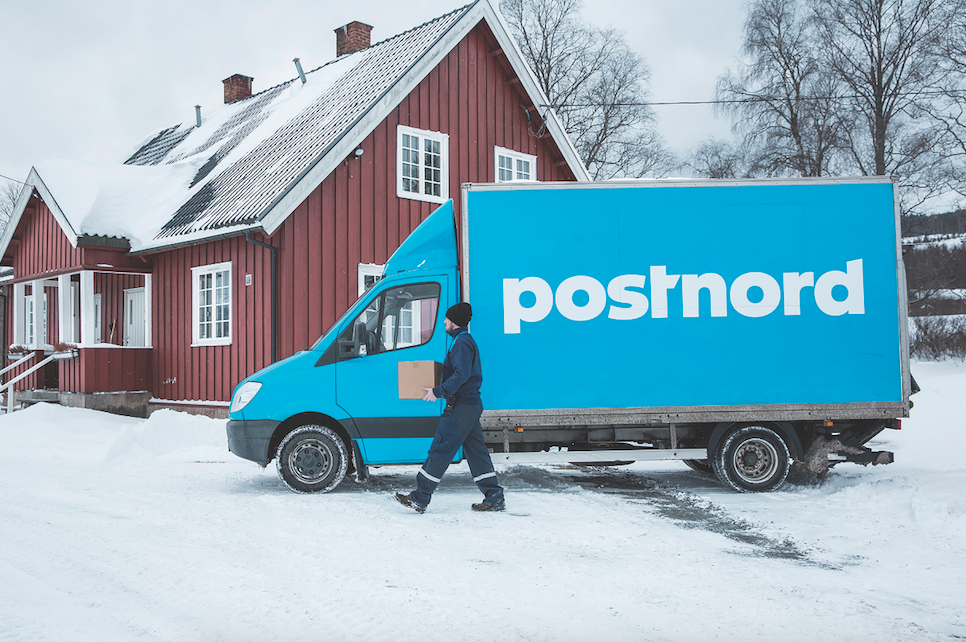
Prior to joining the PostNord Group, Annemarie was a Management Consultant at McKinsey & Company, a role she believes was the foundation for her formula for success.
“It taught me how to quickly assess a situation and, from there, determine how to improve it,” she points out. “I learned that if you can get people aligned around that assessment, you can agree on where you need to go and how to get there. It sounds very simple, but it requires a lot of hard work and interaction with your team.”
That kind of open dialogue can be an endurance test, Annemarie concedes, but it’s also where breakthroughs happen. “People will have different opinions, different experiences. They’ll challenge you, they won’t agree. But it always pays off because, at the end, you’ll have a team that owns the plan. With the right people, the right capabilities and the right attitude, you can go a long way.”
Of course, that has to stretch further in trying times such as a global pandemic, but Annemarie says PostNord AB’s COVID-19 response has been among the greatest achievements during her time with the service.
“We came together. We’re not more resistant to the coronavirus than anybody else in society and our delivery operations can’t work from home, so of course our operations have been impacted,” she says.
“But we’ve still been able to keep operations going. That’s what I’m most proud of. We haven’t let the Nordics down one single day during this pandemic; we’ve been out there delivering. We even had people from HQ temporarily joining the delivery work force as support.”
And this, Annemarie believes, is where the value of having a clear plan becomes obvious. Before the advent of the pandemic, the PostNord team held daily digital meetings. “Something like 3,000 meetings per day,” she says.
“During corona, we ramped that up to more than 15,000 per day. We didn’t lose pace in our transformation programs either. We’re actually ahead. That means that today we deliver our service as we’re supposed to do.”
In the modern age, that means doing so in a sustainable way. Burdened with a firm reliance on road transport, logistics companies are often faced with the challenge of cutting emissions in ways that can threaten operations. For Annemarie, PostNord’s responsibility to lead a sustainability change among postal services is non-negotiable.
“We’ve found ourselves at the forefront of pushing a sustainability agenda across our partners and customers, and ultimately, the consumers,” she says. PostNord set itself a target in 2010 to reduce carbon dioxide emissions by 40% by the end of 2020, and Annemarie admits the organisation didn’t know how it was going to deliver that result.
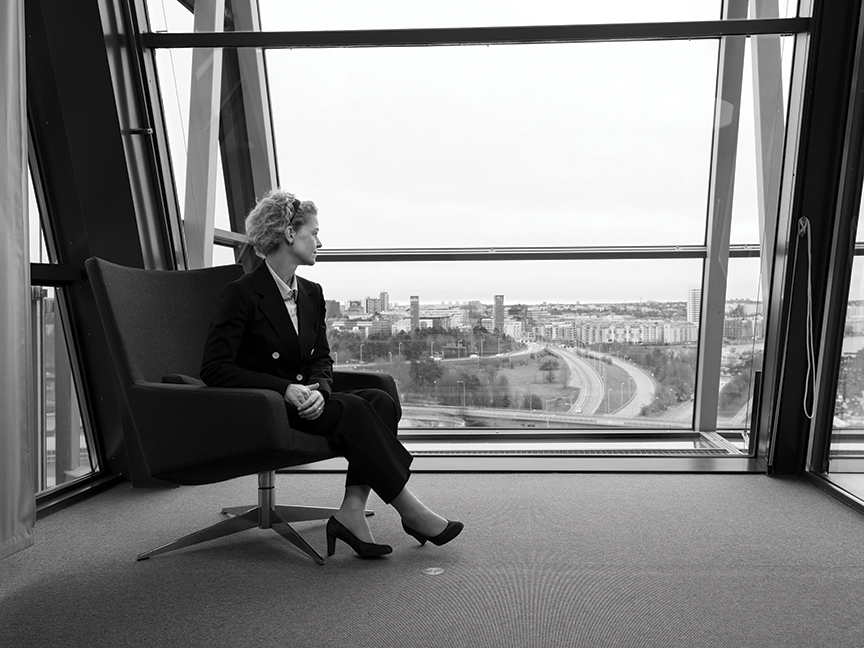
“But we did. We actually achieved that target in the third quarter of 2020, so now we’ve set ourselves a new target,” she tells. By 2030, PostNord AB has an ambition to be entirely free of fossil fuels.
“Again, we don’t know exactly how we’ll get there, but there’s no reason why we shouldn’t be successful.” It’s hoped that by embracing innovation that target won’t just be achievable, it’ll be the first of many steps to come.
“If you open up a parcel, at least in the Nordics, it’s not uncommon that 30% of that parcel will contain air,” she says. “We could reduce our transports by 30% just by eliminating the air in those parcels.”
Today, approximately 35% of PostNord AB’s energy comes from renewable sources; everything from fuel for cars and trucks to heating company buildings.
“I’d say approximately 20% of our fleet is green. So if we can reach a target of 60% renewable energy and doubling the share of the green fleet by 2025, we’ll have gone a long way to reaching our ultimate goal,” Annemarie explains. To do this, PostNord is exploring electric vehicles, biofuel and further green infrastructure.
“Working with our suppliers, customers and receivers will be crucial. We won’t be able to do it on our own.” In fact, the company’s daily journey from A to B is done with the assistance of its strong network of partners.
The recipient’s ability to choose from a variety of delivery options – from carrier to drop zone – is thanks to the Multi-Carrier Checkout system developed in collaboration with Swedish digital logistics company LogTrade.
PostNord AB’s parcel centre has improved sorting operations during the COVID-19 pandemic with linear synchronous motor (LSM) technology developed by Beumer Group. The German intralogistics giant’s LSM cuts energy consumption by up to 75% compared to conventional sorters, and helps PostNord meet its sustainability goals.
Delays, owing to factors such as weather conditions and congestion, a fact of life in the logistics’ industry, have also benefited from the company’s partnerships. The postal service has developed Egil, an artificial intelligence-based machine-learning tool that searches data patterns to determine the likelihood of delays.
We’re also required to have a very modern, agile IT architecture.
The nascent technology can already predict 25% of delays. PostNord AB also teamed with its technology partner Tata Consultancy Services to implement ignioTM, which steps in to handle the more menial aspects of incident management – and uses AI to prevent problems before they occur.
The results speak for themselves: in 2019, PostNord AB enjoyed sales of SEK38.3 billion (€3.8 billion) and achieved a delivery quality of 95.9% “I’d say we’ve very successfully managed things without sacrificing service quality,” Annemarie smiles. “It is a challenge to keep things in the black, but we’ve done it.”
As for the future, she says change will continue. “PostNord has always been a company that adapts as society around us changes. The big shift now is to become an ecommerce- and consumer-oriented company, and that requires much more attention being put on the receiver.”
While in the past, postal companies have focused on satisfying the sender that their mail has reached its destination, the shift to online shopping has changed that way of thinking. “When you receive a parcel, it contains something you’ve decided you want. It’s important to you. We understand that and we’ll do our utmost to make sure you get it,” Annemarie insists.
“For PostNord, turning from looking at the sender and their needs, and instead increasing our focus on the receiver is a big shift.” It’s a shift that’s already sparked innovation within PostNord and Annemarie hints there’s much more in the pipeline.
“I think for a company like ours, we have a responsibility to lead that kind of change. We’re also required to have a very modern, agile IT architecture, so we’re embarking now on a program to significantly modernise our systems,” she says.
“Our customers want to know where their parcel is and whether it will arrive on time – we want to tell them. The senders and receivers both want access; they want control. We need to make sure we have access to that kind of data, ensuring we become much more data-driven in our operations.”
In those areas seemingly beyond control, such as population density and the logistics of a crowded city of the future, PostNord AB is also endeavouring to go above and beyond.
“There’s the whole notion of consolidated deliveries to make things even more convenient for the receiver and to avoid big city traffic. That’s an area where we could innovate much more, and that will be a key enabler for us to deliver on our customer promises and to ensure that we can achieve them in a sustainable way.”
While its role and nature may have changed rapidly in the last half-century, Annemarie believes the postal system has remained a pillar of modern society. “Just 50 years ago, we merely allowed people to communicate,” she says.
“Now we make sure people can live wherever they want in the Nordics. And that’s what we want, that’s why we keep changing. That’s why we stay relevant.”
Proudly supported by:
